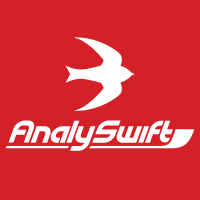About the Group
Public Description
AnalySwift engineering software programs for composites offer users an unique combination of efficiency and accuracy in multiphysics modeling. Developed at Purdue University, Utah State University, and Georgia Tech, AnalySwift's solutions reduce engineering time several orders in magnitude compared to 3D FEA, without a loss of accuracy. For instance, accurate analyses that normally require several hours with heavy computing power, can typically now be done in seconds, and on a typical laptop computer. The tools can now be tried on the cdmHUB platform. AnalySwift's tools include SwiftComp, a computational tool enabling engineers to model composite materials and structures as black aluminum and tackle complex problems impossible with other tools; VABS, a beam model which can achieve 3D FEA fidelity at the efficiency of simple beam elements; and VAMUCH, the first truly general-purpose micromechanics code, which has now been replaced by SwiftComp.
AnalySwift Group on cdmHUB will be used to disseminate information related to SwiftComp, VABS, PreVABS, VAMUCH (SwiftComp Micromechanics), VAPAS, GEBT, and PostGEBT. Below are several other helpful links for software, tools, and resources.
Prof. Yu's Research Group in the Cloud is a central location for technical information related to the programs listed above. Please join this group for questions, announcements, projects, and other resources related to the programs.
- Yu Group Forum is the quickest way to find answers to technical questions about SwiftComp, VABS, VAMUCH, and related tools. Please share your questions here for the benefit and efficiency of the group.
- Yu Group Resources Page is for locating resources, tools, and presentations related to the software.
SwiftComp provides an efficient and accurate computational tool for modeling composite materials and structures. It can be used either independently as a tool for virtual testing of composites or as a plugin to power conventional FEA codes with high-fidelity multiscale modeling for composites. Based on the Mechanics of Structure Genome, SwiftComp enables engineers to model composites as black aluminum, capturing details as needed and affordable. This saves orders of magnitude in computing time and resources without sacrificing accuracy, while enabling engineers to tackle complex problems impossible with other tools.
- SwiftComp Standard Launch Page. Launch SwiftComp with a GUI developed based on gmsh and handle small to moderately large models. Follow the instructions in the Gmsh4SC User's Manual (located under SwiftComp's Supporting Docs).
- Tutorial Video for SwiftComp GUI. The short tutorial for using Gmsh-SwiftComp video shows the basic steps in using Gmsh-SwiftComp to carry out homogenization and dehomogenization of continuous fiber-reinforced composites.
- SwiftComp Introduction Webinar Video Recording (Theory, Examples, and Demo). The webinar was recorded and posted on Altair's website.
-
ANSYS-SwiftComp GUI is an open source interface available for download.
- ABAQUS-SwiftComp GUI is an open source interface available for download.
VABS (Variational Asymptotic Beam Sectional Analysis) is a general-purpose cross-sectional analysis tool for computing beam properties and recovering 3D fields of slender composite structures. VABS is the only commercially available tool capable of rigorously decoupling an original 3D slender solid with complex microstructure (sophisticated cross-section with or without spanwise heterogeneity) into a simple engineering beam model. With continuous development spanning over 15 years for performance and robustness, VABS is a a mature commercial product used by companies, research institutes, and universities worldwide for wind turbine blade, helicopter rotor blade, and wing section design. VABS' accuracy has been extensively verified by its developers and users.
- VABS Group. You may request to join the VABS group by providing some basic export information in the form.
- VABS Launch Page. Once approved, you may launch VABS from this page, which also includes links to several other resources (see supporting documents tab).
- To use VABS, first you need to map webdav as a network drive according to the instruction given in the Knowledge Base. Then, if you are using GEBT, put GEBT inputs files into that drive. You can then directly type vabs input_file to execute the code. If you put all your files in a directory, say vabsdata, then you need to type cd vabsdata, then type vabs input_file to execute the code. Please refer to the user manual regarding how to prepare input file for vabs. Several examples are provided in the ExamplesPicture.ppt file along with the input files in Examples.zip.
- ANSYS-VABS GUI is an open source interface available for download by first joining the ANSYS-VABS GUI Group. After approved for the group, launch the GUI from the group's Resource Page.
- User's Developments for ANSYS-VABS GUI Project. Please join this project if you are interested in contributing to the ANSYS-VABS GUI or developing your own GUI.
- ANSYS-VABS GUI tutorial video. This video shows an example blade.
- ABAQUS-VABS GUI is an open source interface available for download.
- VABS vs ABAQUS Beam Section Generate case study and related summary, comparisons, and examples.
- GEBT (Geometrically Exact Beam Theory), a companion code to VABS, and PostGEBT, a postprocessor to GEBT, are also available on cdmHUB.
VAMUCH (Variational Asymptotic Method for Unit Cell Homogenization), which has been replaced by SwiftComp, is a general-purpose micromechanics code for computing effective properties and local fields of composites. It provides a unified approach to both micromechanics modeling and structural mechanics modeling of composites. VAMUCH takes a finite element mesh of the smallest mathematical building block of the composites as the input and delivers the complete set of effective fully-coupled, multiphysical properties (thermal, elastic, electric, and magnetic) within one analysis without application of highly crafted load and boundary conditions, postprocessing, or multiple runs. VAMUCH not only computes the constitutive models for composites, but also recovers the local field within the original material based on macroscopic structural behavior.
